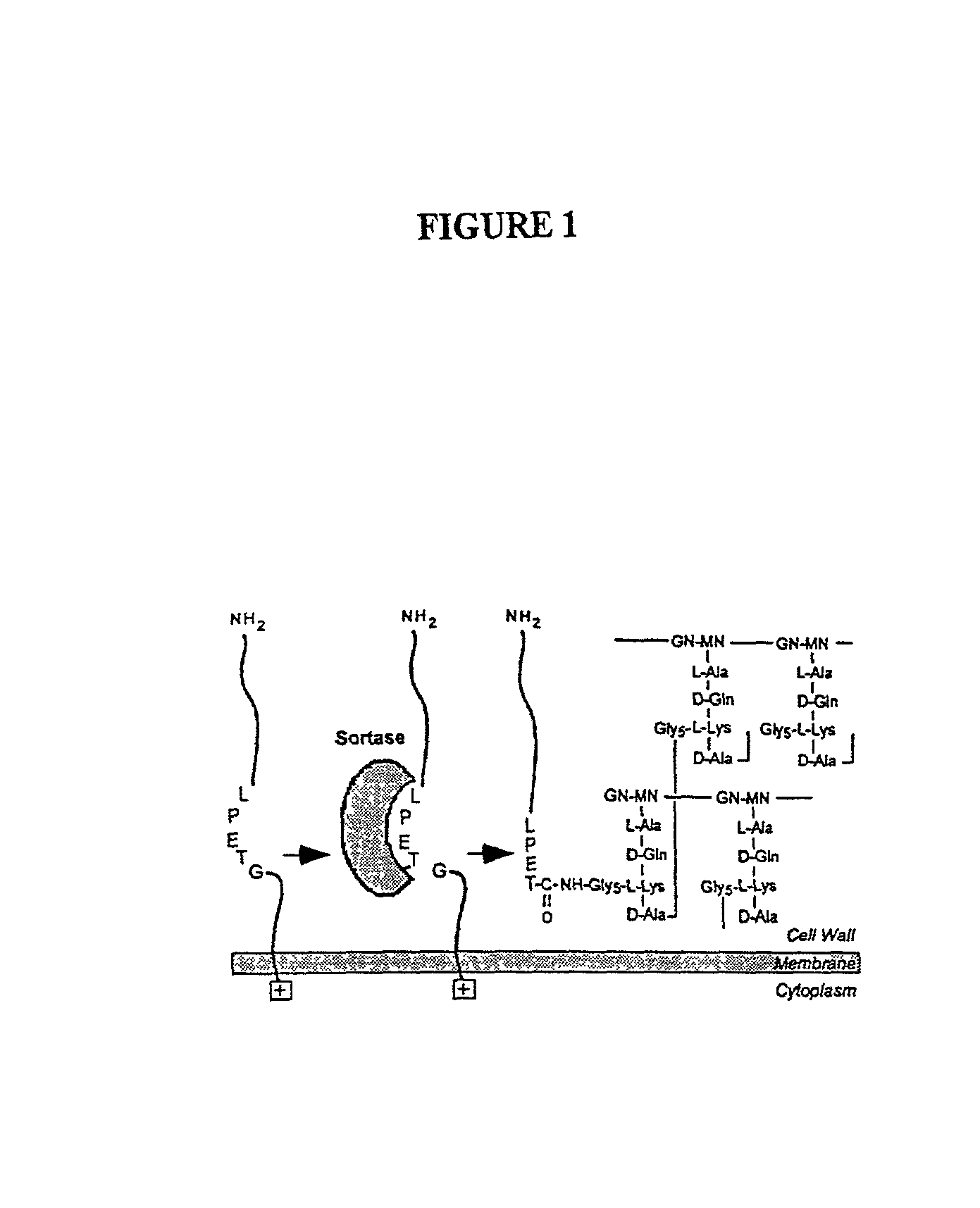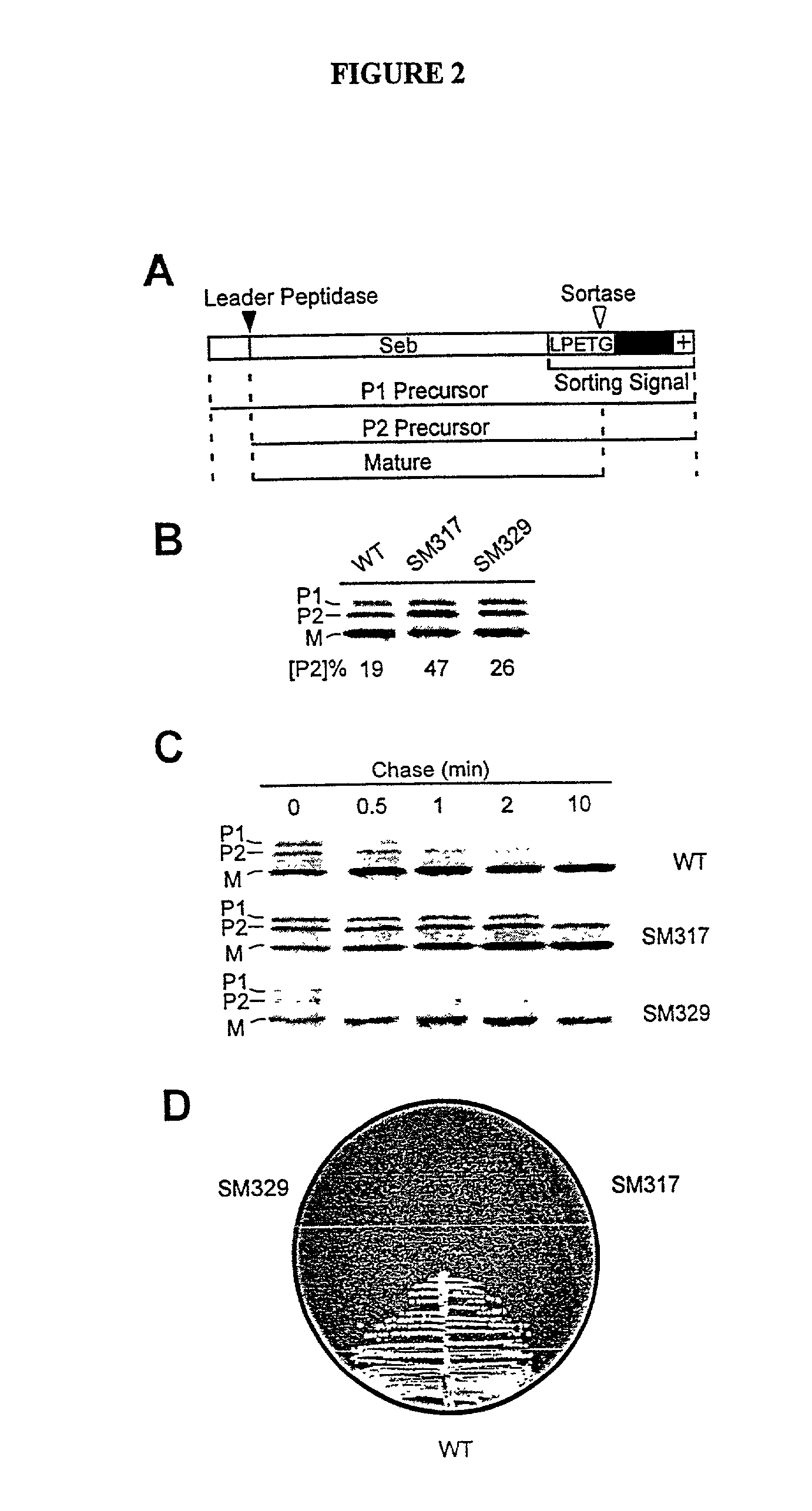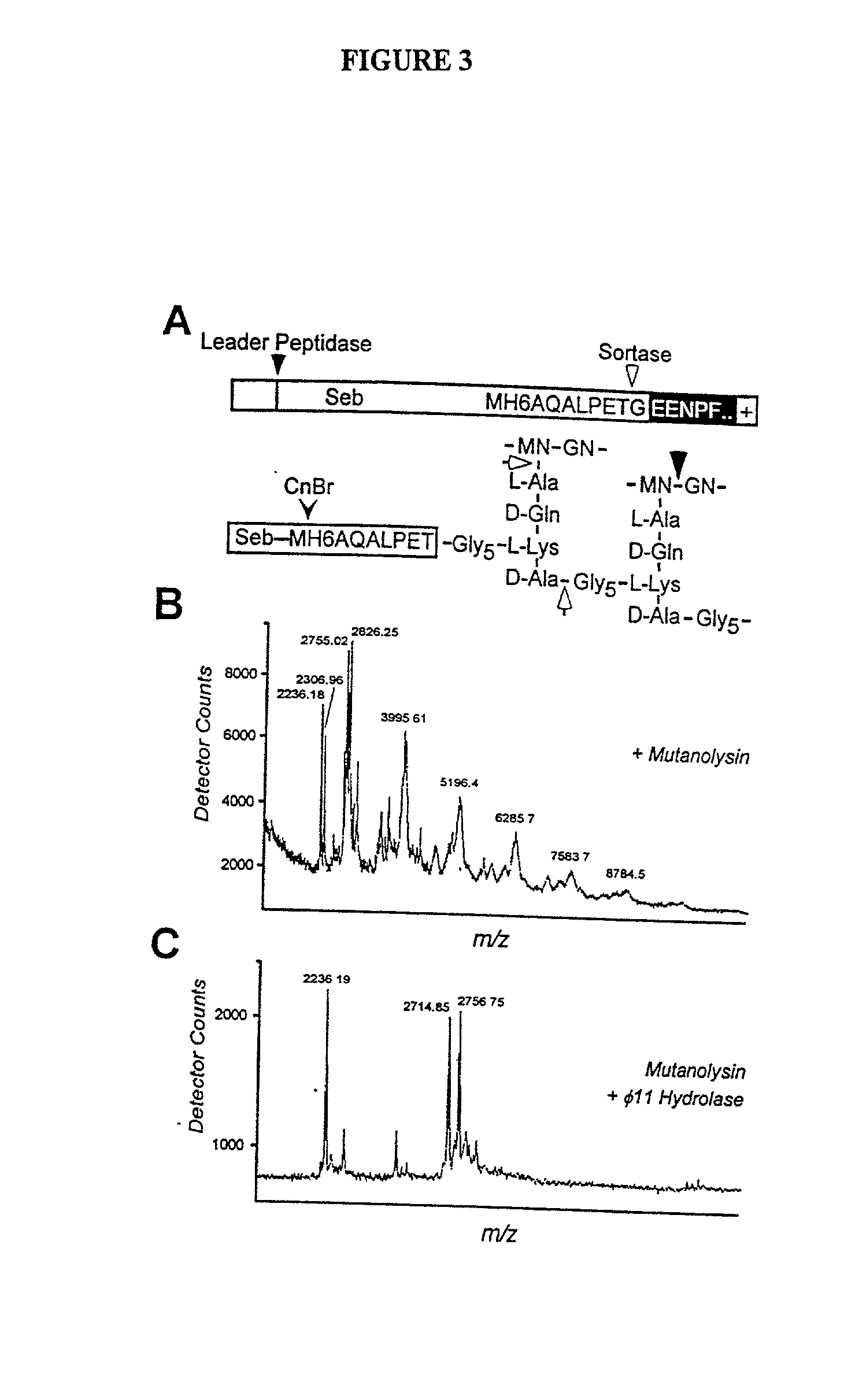Identification of sortase gene
a technology of sortase and transmembrane, which is applied in the field of sortasetransmembrane enzymes, can solve the problems of difficult treatment of immunologically compromised patients, difficult to treat infections caused by gram-positive bacteria, and difficult to increase the clinical value of phages, so as to accelerate cleavage and increase fluorescence.
- Summary
- Abstract
- Description
- Claims
- Application Information
AI Technical Summary
Benefits of technology
Problems solved by technology
Method used
Image
Examples
example 2
[0260] Inhibitors of Cell Wall Sorting
[0261] To study the effects of antibiotic cell wall synthesis inhibitors interfered with the anchoring of surface proteins, the activity of several inhibitors were examined in a Gram-positive bacteria sorting assay. A search for chemical inhibitors of the sorting reaction identified methanethiosulfonates and p-hydroxymercuribenzoic acid. Thus, sortase, the enzyme proposed to cleave surface proteins at the LPXTG motif, appears to be a sulfhydryl containing enzyme that utilizes peptidoglycan precursors but not assembled cell wall as a substrate for the anchoring of surface protein.
[0262] In order to identify compounds that interfere with the anchoring of surface proteins a reporter protein Seb-Spa.sub.490-524 which, when expressed in S. aureus OS2 cells, is synthesized as a precursor in the cytoplasm and initiated into the secretory pathway by an NH.sub.2-terminal leader peptide (P1 precursor) was utilized (Schneewind, O., Mihaylova-Petkov, D. and...
example 3
[0284] Purification and Characterization of Sortase-Transpeptidase
[0285] To examine whether staphylococcal sortase captures surface proteins after their cleavage at the LPXTG motif as acyl-enzyme intermediates, the proposed acyl-enzyme intermediates between surface protein and sortase were treated by hydroxylaminolysis (P. Lawrence and J. L. Strominger, J. Biol. Chem. 245, 3653 (1970); J. W. Kozarich, N. Tokuzo, E. Willoughby, J. L. Strominger, J. Biol. Chem. 252, 7525 (1977)). In this model, the sulfhydryl of sortase may function as a nucleophile at the peptide bond between threonine and glycine, thereby forming a thioester with the carboxyl of threonine and releasing the amino of glycine (FIG. 8A). Lipmann first used hydroxylamine to demonstrate the existence of acyl-enzyme intermediates as this strong nucieophile attacks thioester to form hydroxamate with carboxyl, thereby regenerating enzyme sulfhydryl (F. Lipmann and L. C. Tuttle, J. Biol. Chem. 161, 415 (1945)).
[0286] Hydroxyl...
example 4
[0307] Identification of a second sortase gene, srtB
[0308] A second sortase gene, srtB, was identified with Blast searches using the srtA gene as query (SEQ ID NO:2). All S. aureus strains examined had both srtA and srtB genes. The srtB gene (SEQ ID NO:38) specifies a polypeptide chain of 244 amino acids (FIG. 6B; SEQ. ID. No:37). Alignment of SrtB and SrtA amino acid sequences indicates that SrtB has 22% identity and 37% similarity with the sequence of SrtA as well as 11 conserved amino acid residues. This degree of identity and similarity are the degree of identity and similarity determined with the Blast program (T. A. Tatusova & T. L. Madden, "Blast 2 Sequences--A New Tool for Comparing Protein and Nucleotide Sequences," FEMS Microbiol. Lett. 174:247-250 (1999).
[0309] Role of multiple sortase enzymes in staphylococci
[0310] The N-terminal membrane anchor segment of SrtB (residues 2-25) were replaced with a six-histidine tag (SrtBDN). In the absence of the peptidoglycan substrane,...
PUM
| Property | Measurement | Unit |
|---|---|---|
| Fraction | aaaaa | aaaaa |
| Fraction | aaaaa | aaaaa |
| Fraction | aaaaa | aaaaa |
Abstract
Description
Claims
Application Information
 Login to View More
Login to View More - R&D
- Intellectual Property
- Life Sciences
- Materials
- Tech Scout
- Unparalleled Data Quality
- Higher Quality Content
- 60% Fewer Hallucinations
Browse by: Latest US Patents, China's latest patents, Technical Efficacy Thesaurus, Application Domain, Technology Topic, Popular Technical Reports.
© 2025 PatSnap. All rights reserved.Legal|Privacy policy|Modern Slavery Act Transparency Statement|Sitemap|About US| Contact US: help@patsnap.com



